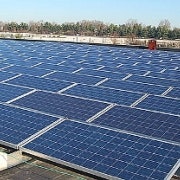Queensland's disguised $200 hit to solar owners
Last year the Queensland Energy Minister promised there would be “no fixed charge of any sort on people using solar.” This year the Queensland Competition Authority proposed exactly that – an increase in fixed charges of $210 per year on electricity customers who have installed PV.
This increase in fixed charges is dressed up as an attempt to make tariffs more “cost reflective”, despite the massive cross subsidy between Queensland’s urban and rural electricity consumers, and without addressing the fundamentally unsustainable network pricing model. The QCA makes no suggestion that anyone else should be charged in a more cost reflective way… just PV customers.
Is it ironic that a competition agency recommends discriminating against the people who are competing with government-supplied electricity, or outright hypocrisy?
The QCA’s proposal seems to be another veiled attempt to reduce solar uptake in the state. Two prior proposals were shot down – the energy industry opposed QCA’s gross feed-in tariff suggestion, and the Queensland government overturned QCA’s proposal for a solar-specific fixed charge. Instead, in its final report the QCA recommends forcing solar customers onto Tariff 12, which has fixed charges that are $210/year greater than the prevailing Tariff 11.
Note that the tariff change would be imposed on all PV customers, regardless of the FIT payments they receive (whether 44c/kWh or 8c/kWh). The goalposts would be shifted for existing solar owners, but the effect on the PV industry market will be disastrously concentrated upon new customers.
In residential tariffs across the nation, the fixed costs of maintaining the network are mostly recovered by averaging costs across total consumption. The QCA argues that because solar customers have lower consumption, they should pay higher fixed costs to contribute their fair share of network costs. Never mind that energy efficiency produces the same outcomes, nor that air conditioning is the real culprit that distorts the market.
Scapegoating solar will not address the problems, and may be illegal; the QCA’s proposal flies in the face of clause 6.18.4 of the National Electricity Rules which outlaws treating customers with microgeneration less favourably than others – a fact acknowledged by the QCA.
The QCA’s proposal will not make charging cost reflective, nor will it reduce the cost of the feed-in tariff; all it does is increase the annual cost of electricity supply for solar customers. This is an underhanded way of applying a fixed charge on people using solar.
In-depth analysis of the QCA’s proposal has been performed using SunWiz’s PVsell solar financial calculator which is used by over 150 PV retailers. Using an average customer’s load profile and a 3kW solar power system, we find:
-- A non-solar customer with an average load profile would be worse off by $217 per year if they were forced from Tariff 11 to Tariff 12.
-- If a solar customer were forced onto Tariff 12 they would be 30 per cent worse off, with little they could do about it.
-- The bill reduction from a 3kW solar power system is almost equivalent whether on Tariff 11 or Tariff 12, but the customer starts off $210 behind due to the increased fixed charges.
-- Accounting for this increased fixed fee, the annual saving on the overall electricity bill for a customer with a 3kW system is reduced from about $853 to $599 – a reduction of 30 per cent – which pushes payback out to 11 years.
-- The customer would have to shift 4kWh of weekday consumption from a peak period to an off-peak period to offset the higher fixed charges.
-- Installing solar systems on west- or northwest-facing roofs in an attempt to push solar generation into the peak period produces minimal benefit.
-- A larger system would be required to offset the $210/year ‘fixed cost for solar’, which may exacerbate network impacts.

This analysis highlights the QCA’s conclusion, “To the extent that a customer has an inflexible consumption profile, mandating that they be billed on a TOU basis could produce undesirable and inequitable outcomes”. Put simply, shifting an average customer to TOU in Queensland results in an increased bill.
So we have a policy proposal which fails to achieve what the QCA wants it to achieve, which harms the PV industry, which is inequitable and discriminatory in many ways and which would break a very clear promise from the energy minister. Surely the QCA can do better?
Warwick Johnston is Managing Director and Jo Adlard is an Analyst of Sunwiz Consulting.
This article was originally produced by Sunwiz, republished with permission.















